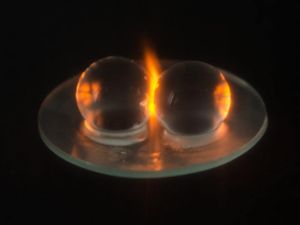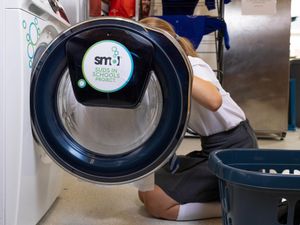Scientists explain why microwaved grapes explode
Experiments show how grape halves create bright plasmas of super-hot electrically charged gas when exposed to microwave radiation.

A pyrotechnic party trick that involves grapes bursting into flame in a microwave has been explained by scientists.
The trick, popular at science fairs and on YouTube, is performed as follows: Cut a grape into two halves joined by a small piece of skin and place in a household microwave oven.
Switch on at full power and enjoy the spectacle as white hot fire erupts from the point where the two grape halves touch.
The new study conducted by a team of Canadian scientists showed how the phenomenon was triggered by charged molecules containing sodium and potassium.
Experiments with water-based hydrogel beads and computer simulations revealed that the joining piece of skin does not play an important role, as was previously thought.
Electromagnetic resonance led to concentrated spots where the “ionised” molecules generated a plasma, a super-hot electrically conductive gas.
The ability of water to absorb microwaves contributed to the formation of the hot spots.
The plasma becomes self-perpetuating and separate from the “dimer” – the pair of identical source objects, in this case two grape halves, said the scientists.
Dr Aaron Slepkov, from Trent University in Ontario, and colleagues wrote in the journal Proceedings of the National Academy of Sciences: “Observing a piece of fruit burst into flames in a microwave oven is exciting and memorable.
“Emission spectra from grape plasma suggest that potassium and sodium species, abundant in the grape skin, are field-ionised by a strong concentration of electric field near the point of contact.
“The ions themselves are resonant with the driving microwave radiation and can evolve a cascade of ionisation in the air, forming a microwave-heated plasma that grows and becomes independent from the dimer.”
Part of the study involved small quail eggs, which were also shown to produce hot spots in a microwave.
Emptied eggs did not respond the same way, but when the eggs were filled with water the hot spots returned.





